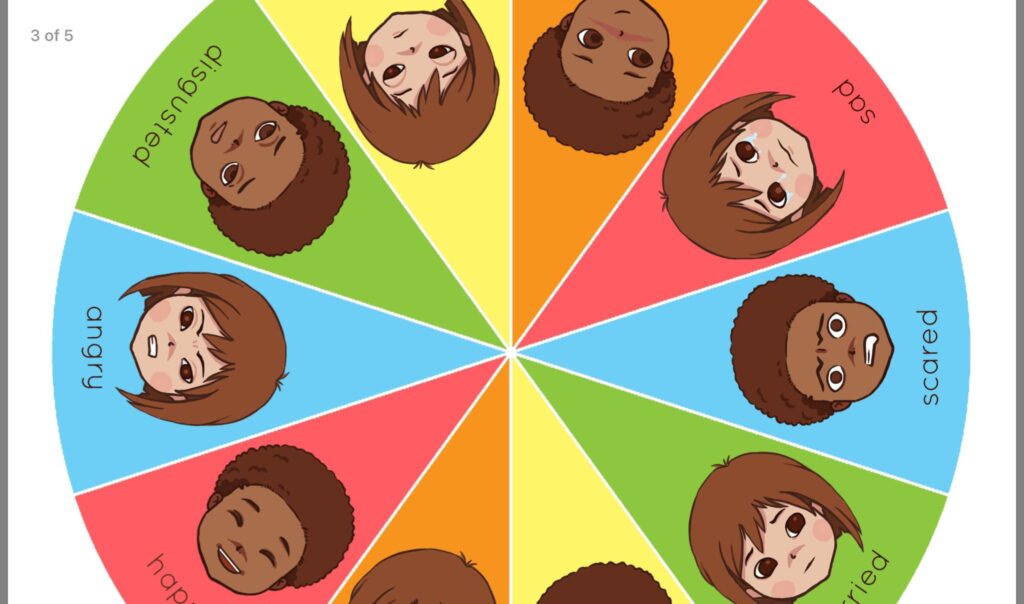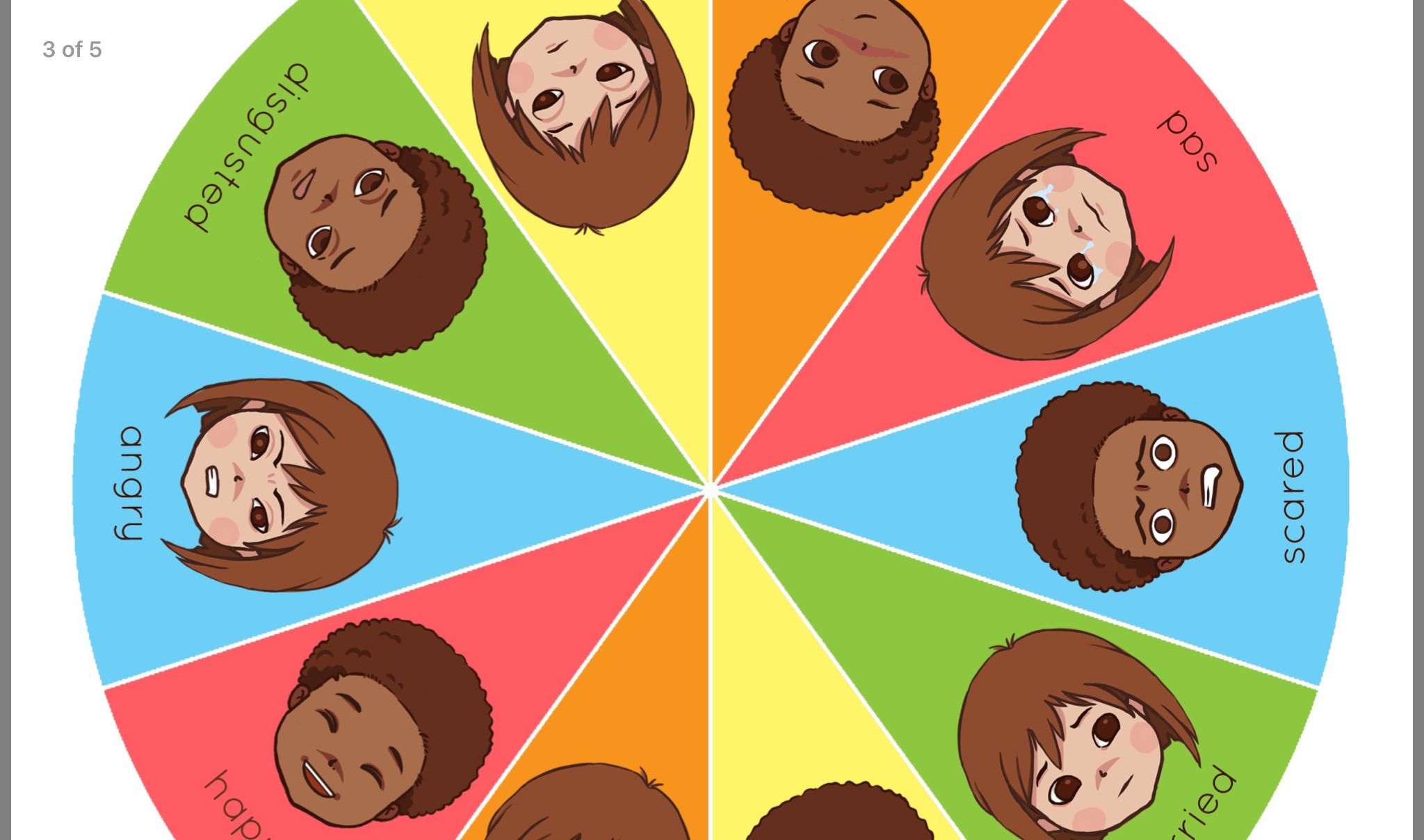
Unlock Your Emotional Vocabulary: A Deep Dive into the Feeling Wheel PDF
In the realm of emotional intelligence and self-awareness, tools like the feeling wheel PDF have become increasingly popular. These visual aids offer a structured way to identify and articulate emotions, fostering better communication and understanding of oneself. But what exactly is a feeling wheel PDF, how does it work, and how can it benefit you? This comprehensive guide explores the intricacies of the feeling wheel PDF, its origins, practical applications, and where to find reliable resources.
What is a Feeling Wheel?
A feeling wheel, at its core, is a visual representation of emotions, typically arranged in concentric circles. The center of the wheel usually contains a few core emotions, such as happiness, sadness, anger, fear, and surprise. As you move outward, the wheel expands into more nuanced and specific feelings related to those core emotions. For example, under ‘anger,’ you might find feelings like frustration, irritation, resentment, and rage.
The feeling wheel PDF format allows for easy access and portability, making it a convenient tool for individuals, therapists, educators, and anyone interested in exploring their emotional landscape. The visual nature of the wheel makes it particularly helpful for those who struggle to verbalize their feelings or who want to expand their emotional vocabulary.
The History and Development of the Feeling Wheel
While various iterations of emotion wheels exist, one of the most widely recognized is the Plutchik’s Wheel of Emotions, developed by psychologist Robert Plutchik. Plutchik’s model, though not always presented in a circular format, proposed eight basic emotions: joy, trust, fear, surprise, sadness, disgust, anger, and anticipation. He argued that more complex emotions are combinations of these basic ones.
The feeling wheel PDF we often see today is a more user-friendly adaptation of these complex models, designed to be accessible and practical. It is often attributed to Dr. Gloria Willcox, who created a version specifically aimed at helping individuals identify and articulate their feelings more effectively.
How to Use a Feeling Wheel PDF
Using a feeling wheel PDF is straightforward. The process typically involves:
- Identifying the primary emotion: Start by considering the core emotions at the center of the wheel. Which one resonates most strongly with you?
- Exploring related feelings: Once you’ve identified the primary emotion, move outward to the next circle. Explore the feelings listed under that category. Do any of them more accurately describe what you’re experiencing?
- Refining your description: Continue moving outward, refining your understanding of your emotion. The outer circles offer even more specific and nuanced feelings.
- Journaling or discussing: Once you’ve identified the most accurate description of your emotion, take some time to journal about it or discuss it with a trusted friend, therapist, or family member. This can help you process the emotion and understand its root causes.
The feeling wheel PDF is not meant to be a rigid or definitive guide. It’s a tool to help you explore and understand your emotions, not to confine them. Feel free to use it as a starting point and adapt it to your own experiences.
Benefits of Using a Feeling Wheel PDF
The benefits of using a feeling wheel PDF are numerous and can positively impact various aspects of your life:
- Improved Emotional Intelligence: By regularly using the wheel, you’ll develop a greater understanding of your own emotions and the emotions of others. This can lead to increased empathy, better communication, and stronger relationships.
- Enhanced Self-Awareness: The feeling wheel PDF encourages introspection and self-reflection. It helps you identify patterns in your emotional responses and understand the triggers that lead to certain feelings.
- Better Communication: Articulating your emotions is crucial for effective communication. The wheel provides a vocabulary for expressing your feelings, making it easier to communicate your needs and boundaries to others.
- Reduced Stress and Anxiety: Identifying and processing your emotions can help reduce stress and anxiety. By understanding the root causes of your feelings, you can develop coping mechanisms and strategies for managing difficult emotions.
- Improved Mental Health: Using a feeling wheel PDF can be a valuable tool in managing mental health conditions such as depression, anxiety, and PTSD. It can help you identify and process difficult emotions, leading to improved mood and overall well-being.
- Conflict Resolution: Understanding your own and others’ emotions is essential for effective conflict resolution. The wheel can help you identify the underlying feelings driving a conflict, making it easier to find common ground and reach a resolution.
Where to Find a Feeling Wheel PDF
Many resources offer feeling wheel PDF downloads. Here are a few reliable sources:
- Therapy Websites: Many therapy websites offer free resources, including feeling wheel PDFs. Search for reputable therapy websites in your area or online.
- Mental Health Organizations: Organizations like the National Alliance on Mental Illness (NAMI) and Mental Health America (MHA) often provide free resources, including tools for emotional regulation.
- Educational Institutions: Some universities and colleges offer resources for students and the public, including feeling wheel PDFs.
- Online Search: A simple online search for “feeling wheel PDF” will yield numerous results. However, be sure to vet the sources to ensure they are reputable and accurate.
When searching for a feeling wheel PDF, look for versions that are clear, easy to read, and aligned with your own values and beliefs. Some wheels may be more complex than others, so choose one that is appropriate for your level of understanding and experience.
Different Types of Feeling Wheels
While the basic structure of a feeling wheel remains consistent, different variations cater to specific needs and populations. Some common types include:
- Basic Feeling Wheel: This is the most common type, featuring core emotions and related feelings in concentric circles.
- Children’s Feeling Wheel: These wheels use simpler language and illustrations to help children identify and express their emotions.
- Relationship Feeling Wheel: These wheels focus on emotions related to relationships, such as trust, intimacy, and conflict.
- Trauma-Informed Feeling Wheel: These wheels are designed to be sensitive to the needs of individuals who have experienced trauma, avoiding language that could be triggering.
The best type of feeling wheel PDF for you will depend on your individual needs and preferences. Experiment with different versions to find one that resonates with you.
Integrating the Feeling Wheel PDF into Daily Life
To maximize the benefits of a feeling wheel PDF, integrate it into your daily life. Here are a few suggestions:
- Daily Check-In: Take a few minutes each day to check in with yourself and identify your emotions using the wheel.
- Journaling Prompt: Use the wheel as a journaling prompt. Choose an emotion and write about your experiences related to that feeling.
- Communication Tool: Use the wheel to help you communicate your feelings to others. Share the wheel with your partner, family members, or friends and use it as a starting point for discussions about your emotions.
- Therapy Support: Bring the wheel to your therapy sessions and use it as a tool for exploring your emotions with your therapist.
- Mindfulness Practice: Incorporate the wheel into your mindfulness practice. As you meditate, focus on identifying and observing your emotions without judgment.
Potential Limitations and Considerations
While the feeling wheel PDF is a valuable tool, it’s important to acknowledge its limitations:
- Oversimplification: Emotions are complex and nuanced. The wheel can oversimplify these complexities, potentially leading to inaccurate or incomplete descriptions of your feelings.
- Cultural Bias: The emotions listed on the wheel may reflect cultural biases and may not be universally applicable.
- Subjectivity: Emotions are subjective experiences. The wheel is a tool for self-reflection, but it should not be used as a definitive measure of your emotional state.
- Not a Replacement for Therapy: The wheel is a helpful tool, but it’s not a replacement for professional therapy. If you are struggling with significant emotional difficulties, seek the help of a qualified mental health professional.
Despite these limitations, the feeling wheel PDF remains a valuable resource for anyone seeking to improve their emotional intelligence and self-awareness. By understanding its strengths and limitations, you can use it effectively to enhance your emotional well-being.
Conclusion
The feeling wheel PDF is a powerful tool for unlocking your emotional vocabulary and deepening your understanding of yourself. By providing a structured way to identify and articulate your emotions, it can lead to improved communication, reduced stress, and enhanced mental health. Whether you’re a therapist, educator, or simply someone interested in exploring your emotional landscape, the feeling wheel PDF offers a valuable resource for navigating the complexities of human emotion. Download a feeling wheel PDF today and embark on a journey of self-discovery.
[See also: Understanding Emotional Intelligence]
[See also: Benefits of Mindfulness Meditation]
[See also: Managing Anxiety and Stress]

